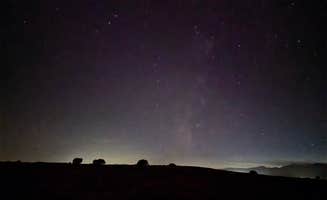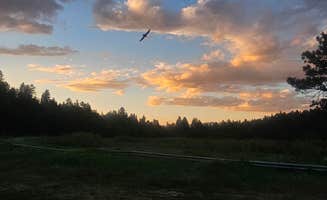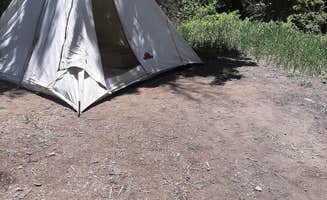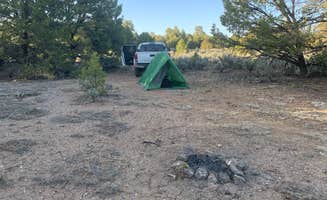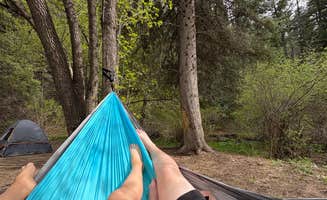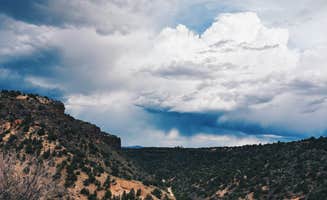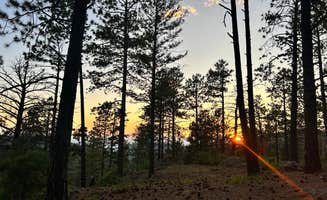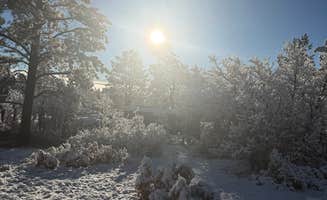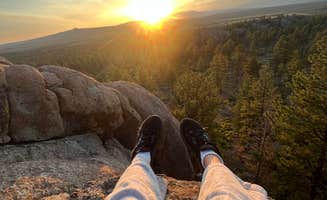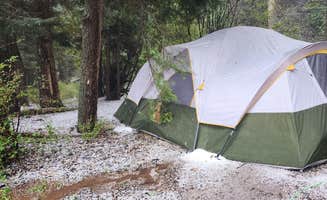Primitive camping near Embudo, New Mexico encompasses high desert terrain ranging from 6,000 to 8,500 feet elevation, with temperature swings of 30-40 degrees between day and night common. Carson National Forest and BLM lands surrounding the area contain volcanic rock formations and pine forest transitions, creating distinct microclimates between camping zones. Winter camping requires preparation for snow at higher elevations, while summer monsoon season (July-August) brings flash flood risks to lower areas.
What to do
Hiking to El Rito climbing walls: From Forest Road 558 dispersed sites, access trails to the El Rito climbing area. "We had a few thousand acres all to ourselves for four nights while climbing on nearby El Rito walls," notes a camper who appreciated the proximity to this recreational area.
Wildlife viewing at dawn/dusk: The juniper and pine transition zones attract diverse wildlife. At Tres Piedras Dispersed Site, you can spot elk in the early morning. "No hookups. Not many people. You can spend 14 days there. Make sure you practice LNT and take some time to enjoy nature," suggests a visitor who valued the solitude.
Star gazing away from highway: For optimal night sky viewing, camp at sites further from Highway 285. "Really quiet even with the highway close by. Great stars at night, decently clean (the sites that I saw)," reports a camper who found quality stargazing at Forest Road 558 sites.
What campers like
Road network options: The forest service roads around Embudo offer multiple camping possibilities. "There are a bunch of different roads you can turn off to camp on if you're driving from Taos to Durango," explains a visitor to Carson NF - Forest Service Road 578, highlighting the flexibility for travelers passing through.
River access spots: Areas near water features provide both recreation and practical benefits. "I carried two black boulders over to serve as a table and chair. I didn't see anyone else camping or driving by," reports a camper who found solitude at Forest Service Road 578.
Off-grid seclusion: Many campers value the disconnected nature of these sites. "A nice secluded little forest road. RVs will not make it, so it's nice and quiet. Stayed one night and saw no one else," notes a visitor to Dispersed Camping Near Taos, emphasizing the peaceful atmosphere.
What you should know
Road conditions vary seasonally: Spring thaw and summer monsoons can dramatically change road surfaces. "The road in is a bit sketchy at times, but as long as you are mindful of potholes you should be good—my minivan made it with ease," explains a camper at Pajarito Springs about navigating forest roads.
Site cleanliness concerns: Some areas have trash problems from improper use. "There is a lot of trash right as you come in, but there's plenty of clean spots not too much further in. Decent spot, though also popular," warns a visitor about Sante Fe National Forest BLM-Road 62.
Fire management varies: Regulations change with seasons and conditions. "Last thing I will say is be cognizant of fires and flooding, both can happen here!" advises a camper at Forest Service 439, reminding visitors of dual environmental risks.
Tips for camping with families
Look for flat pullouts: For family camping, find level sites that accommodate multiple tents. "A good amount of dispersed sites off of FSR558. I just pulled off to one of the closer sites but looked like tons of other sites were further in on the road," suggests a camper about Forest Road 558 options.
Easy access water spots: With children, prioritize sites near water for both recreation and practical uses. "Make sure you go all the way to the coordinates as there are a ton of great spots off to the left of the road, plenty of room to spread out and some solidly flat spots. Made a quick walk down to the springs in the evening," recommends a visitor to Dispersed Camping Near Taos.
Check for seasonal facilities: While most sites lack amenities, some areas have minimal services during peak season. "There are 4 places to park on the lower section and 3 on the upper section, most spots can fit multiple cars. A little stream is near by—a little shallow and a little mucky on the bottom, but really refreshing," notes a camper at Forest Service 439.
Tips from RVers
Site selection for trailer parking: RV campers should scout turnout space before committing. "I pull a small trailer and the road in was rough. I was concerned about being able to turn around. When I got to the spot where there are six or eight camping spots, finding one suitable for a trailer was difficult, but I did it," explains an RVer at Forest Service 439.
Lower elevation sites for larger rigs: The first sites off main roads work best for RVs and trailers. "You could probably make it in a 2WD vehicle for the first few sites but it gets a bit more rugged as you continue in," advises a camper about Forest Road 558, indicating where larger vehicles should stop.
Sun exposure considerations: Most dispersed sites lack shade. "Dirt road but we did it with no problem with our 24ft trailer. Make sure you go all the way to the coordinates as there are a ton of great spots off to the left of the road," shares an RVer who successfully navigated to Dispersed Camping Near Taos with a sizable trailer.



